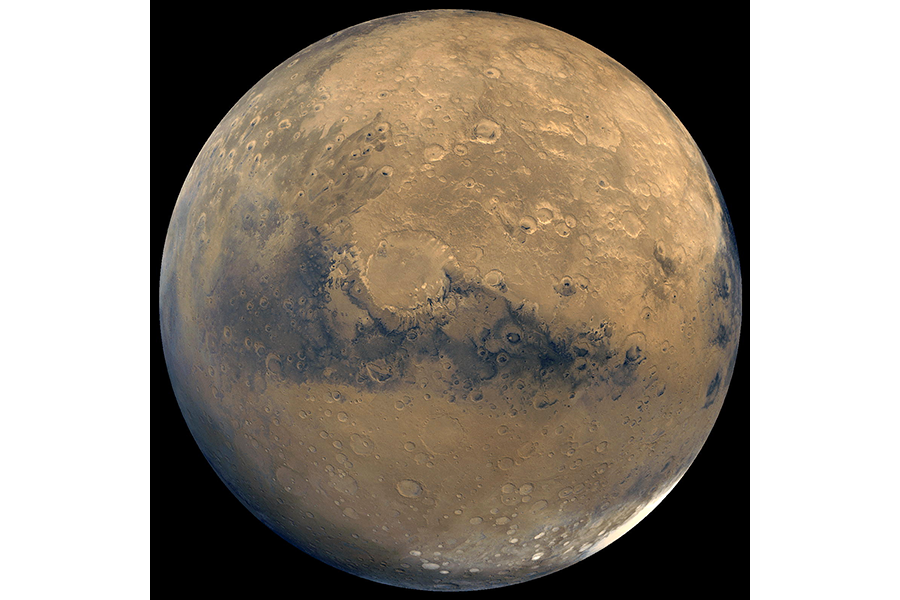The Red Planet is red hot right now, but are we really ready to send people to Mars?
Loading...
There’s never been a better time to be a Mars fan, but would-be colonists might be wise not to hold their precious breath.
The 5th Annual Humans to Mars Summit (H2M) will kick off in Washington, D.C., on May 9, welcoming prominent figures from the business world, academia, and government to a conference focused on the ambitious goal of sending humans to the Red Planet.
“Today we have unprecedented support for Mars exploration from Congress, industry, and the general public,” said Explore Mars chief executive officer Chris Carberry in a press release. “Children born in 2017 are more likely than any generation before them to witness, before their 18th birthday, humans walk on another planet for the first time.”
But pulling off the greatest engineering challenge in human history will require a lot more than public support.
This year’s H2M summit will certainly have a lot to talk about. In addition to NASA, private organizations and governments including SpaceX, India, Europe, the United Arab Emirates, and China are all planning to launch Mars missions in 2020, to arrive at the Red Planet in 2021.
Why the traffic jam? Going to Mars isn’t like taking a road trip. Both Earth and Mars are flying around the sun at more than a dozen miles per second. And the two are out of sync in a way that brings Mars periodically closer then farther away.
Spacecraft launched at just the right time can trace out the shortest possible elliptical path from where Earth is to where Mars will be in about five to six months using current propulsion methods. That time is called a launch window, and the next one to Mars opens up in 2020.
Of that Mars-bound fleet, some ships are likely to fail, but some are likely to succeed. Those that do will join the eight active missions already crowding the Martian skies and surface.
All these technological feats combined with sky-high rhetoric from the likes of SpaceX and the UAE might make it feel like a crewed mission is right around the corner, but at least one astronaut disagrees.
“We don’t have the technology to go to Mars, with everything we know today, so I don’t think that a marketing company and a TV-type of selection is sending anybody anywhere,” Julie Payette told a 2015 gathering at the International Civil Aviation Organization’s headquarters in Montreal, referring to the Mars One one-way colonization organization.
In addition to often discussed difficulties such as radiation and mental health, even efficient life support remains elusive.
There are no rest areas between Earth and Mars, so astronauts would have to take everything they need with them. Not just toothbrushes and clean underwear but food, water, even air. Current proposals for round trip missions come in at around three years round trip. Six months there, six months back, and at least a year of waiting for the return launch window.
The entire Apollo 11 mission lasted just over a week.
Of course, the space agencies have learned a tremendous amount about living in space from the International Space Station (ISS), which has provided a habitable bubble outside the comfort of our atmosphere for more than 16 years.
In recent years the ISS has made great strides in improving its resource-use efficiency. The Water Recovery System can recycle more than 90 percent of the liquid it gets back, Bob Bagdigian, the Environmental Control Life Support System project manager at NASA’s Marshall Space Flight Center said in 2008.
Oxygen is trickier. Some can be made by splitting apart water molecules with electricity, but quite a bit still has to be brought from Earth.
This means that the ISS is far from self-sustaining, receiving shipments every few months from Earth, most recently two capsules comprising more than 8,000 pounds of supplies and science experiments in the past few days.
And that’s not to mention food, which is fundamentally non-recyclable. ISS astronauts consume almost two pounds of food a day. Following an ISS diet, a four-person crew on a three-year Mars mission would need to bring 24,000 pounds of food with them.
SpaceX’s last Dragon capsule was able to bring 5,500 pounds of supplies to the ISS, but that was with no people on board.
Some hope to address that sizeable shortfall with space farming. Potatoes, anybody?
However, our study of space botany is in its infancy. The ISS’s Vegetable Production System has succeeded in raising flowers and five harvests of Chinese cabbage, but the current crew of six were depending on those leaves as a major form of sustenance, they’d go quite hungry.
Space plants could someday solve two problems for the volume of one. A thriving greenhouse could also serve as a natural life support system, plants scrubbing harmful carbon dioxide from the air and replacing it with oxygen, much as they do for us on spaceship Earth.
But for now, the space agriculture program is more focused on learning how plants grow in space, and providing astronauts with some much-needed rest and relaxation.
“I love gardening on Earth, and it is just as fun in space,” astronaut Peggy Whitson tweeted in early February. “I just need more room to plant more!”
It looks like Dr. Whitson may get her wish, as a second veggie system is slated to get shipped up later this spring.






